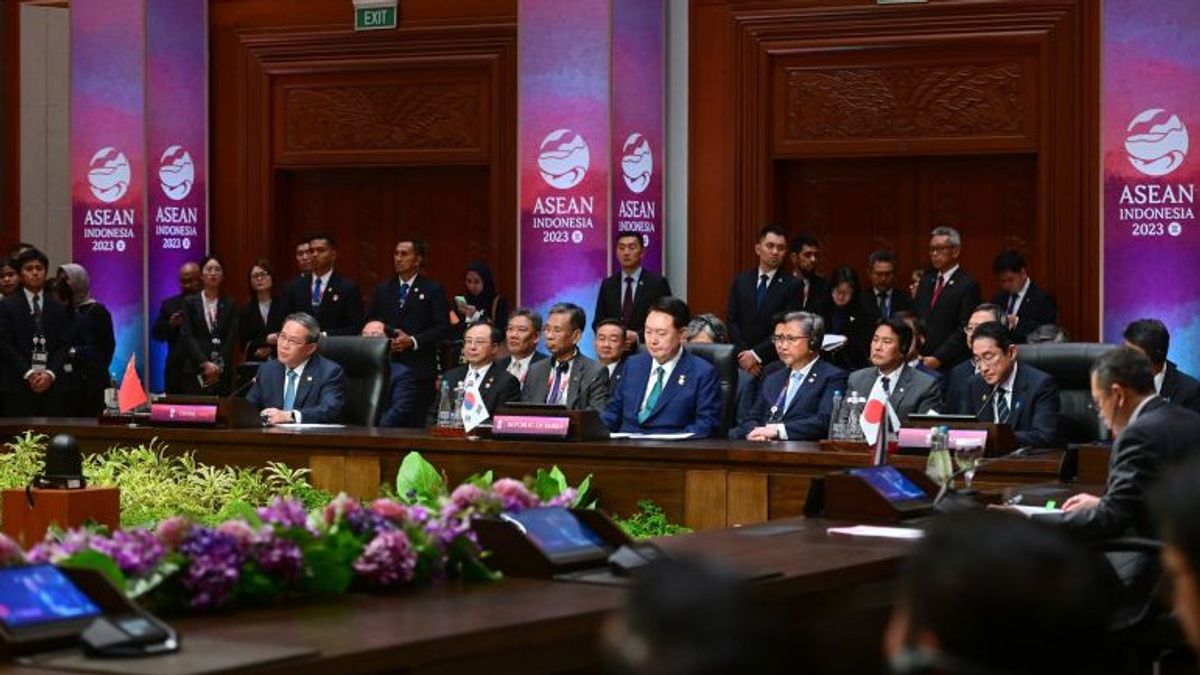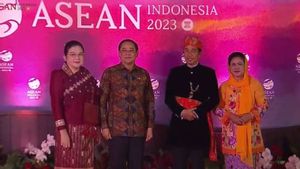JAKARTA - Chinese Foreign Ministry spokesman Mao Ning hopes that Japan will explain about the disposal of radioactive water that has been processed from the Fukushima Nuclear Power Plant (PLTN) at the moment of ASEAN Plus Three (APT).
"We know there are media reports about Japan saying it will explain the disposal of the waste to other countries at the ASEAN Plus Three meeting. We hope that Japan will face international applications and explain its position sincerely and based on science," Mao Ning said at a press conference in Beijing, China. reported by ANTARA, Wednesday, September 6.
Separately, President Joko Widodo chaired the 26th ASEAN Plus Three (APT) Summit attended by South Korean President Yoon Suk Yeol, Chinese Prime Minister Li Qiang, Japanese Prime Minister Fumio Kishida and state leaders and ASEAN member governments.
President Jokowi at the APT Summit invited China, Japan and South Korea to create new opportunities for cooperation in green economy development and maintain regional peace and stability.
"We hope Japan does not continue to underestimate or cover the adverse effects of the disposal of the wastewater," said Mao Ning.
Mao Ning said Japan made the term "water that has been processed" and kept saying that the tritium concentration in the water had met the standard.
"In order to give the impression that only tritium is a radioactive substance in contaminated water and because tritium concentration meets standards, nuclearly contaminated water is harmless. But this narrative is difficult to deceive the international community," added Mao Ning.
VOIR éGALEMENT:
Mao Ning said that despite various purification efforts, Fukushima waste flows still contain various radioactive materials such as carbon-14, cobalt-60, strontium-90, iodin-129, and caesium-137.
"Whatever the Japanese name gives to the water, the radioactive substance will not go away by itself," said Mao Ning.
In the first phase, the Tokyo Electric Power Company (TEPCO) operator will dilute about 7,800 tons of processed water with seawater, and the dilute water will be issued for 17 consecutive days.
TEPCO has filled the facility, called a vertical disposal axis, with water that has been processed and diluted. Each ton of treated water is mixed with about 1,200 tons of seawater.
There are about 1.3 million tons of processed water in the TEPCO complex. The operator ran out of storage capacity, forcing Japan to throw the water into the sea.
The English, Chinese, Japanese, Arabic, and French versions are automatically generated by the AI. So there may still be inaccuracies in translating, please always see Indonesian as our main language. (system supported by DigitalSiber.id)














